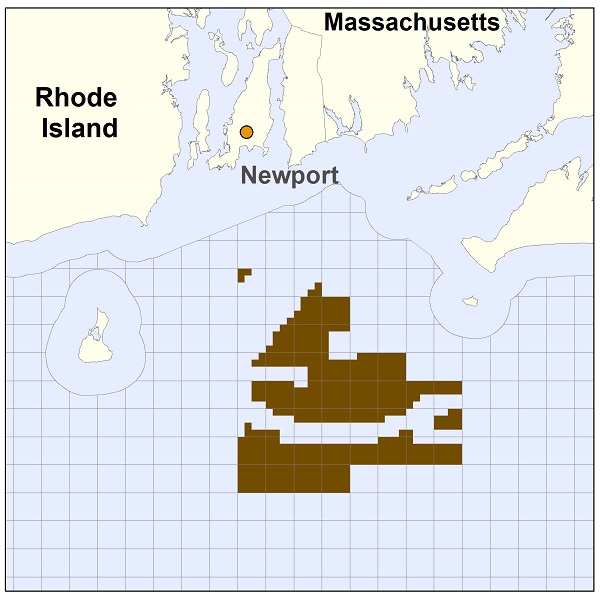In the first competitive lease sale for renewable energy in U.S. waters, held on Wednesday, we have a winner: Deepwater Wind.
You could say the taxpayers were winners, too, in as much as Deepwater will pay $3.8 million for the rights to build in two Wind Energy Areas off Massachusetts and Rhode Island, and it will pay $500,000 in annual rent until it has turbines up and running. Once the wind farm is operating, the company will also pay annual royalty fees, based on the value of the energy produced.

“This is an enormous step forward for the industry. This is the best site for offshore wind in the United States, bar none,” Deepwater Wind CEO Jeffrey Grybowski said in a statement. “Our Deepwater Wind Energy Center Project will produce clean power and jobs for an entire region. It’s very exciting.”
The plan, the company said, is to install up to 200 turbines, providing capacity of as much as 1,000 megawatts, with a transmission system linking Long Island to southeastern New England. According to the company:
Construction could begin as early as 2017, with commercial operations by 2018. DWEC will produce enough energy to power approximately 350,000 homes – and displace over 1.7 million tons of carbon dioxide emissions annually.
Most of DWEC’s turbines will be located 20 to 25 miles from the nearest landfall – virtually invisible from shore. No turbine will be located any closer than roughly 13 miles from land.
Deepwater was given a credit in the bidding, which drew two other participants and went for 11 rounds, because it holds a joint-development agreement with Rhode Island. The company is already at work on developing the 30-megawatt Block Island Wind Farm not too far from this newly leased site but closer to the coast. Construction on that project is expected to begin this year and by 2015 it could be operating as the first offshore wind farm in the United States.
The much larger Deepwater Wind Energy Center, a longer-term play, will need plenty of financing to become reality. Grybowski told Bloomberg it could cost $5 billion to build, with about $1 billion of that for transmission systems to get the power to customers in New York, Rhode Island, Massachusetts and Connecticut.
“We’re hoping that this year and next year we can start putting the power purchase agreements together,” Grybowski told Bloomberg. The project will likely be built in phases with 200 megawatts to 400 megawatts of generating capacity, he said. “It’s unlikely we would try to sell the power all at once.”
The government’s characterization of this as a “first ever” event might confuse readers who recall that Interior last October announced a lease “first,” for an agreement for an area off Delaware, and that earlier the department had issued a lease to Cape Wind for its Nantucket Sound project that the agency also called a “first.”
Here’s the scoop on all that: The Cape Wind agreement was indeed the first such federal commercial lease granted, but it was issued even as the administration was still working to set up a process for developing potential wind resources, so it wasn’t competitive. The Delaware deal was the first lease to go out under the administration’s “Smart from the Start” process, but in that case there was no competitive interest in the tract.